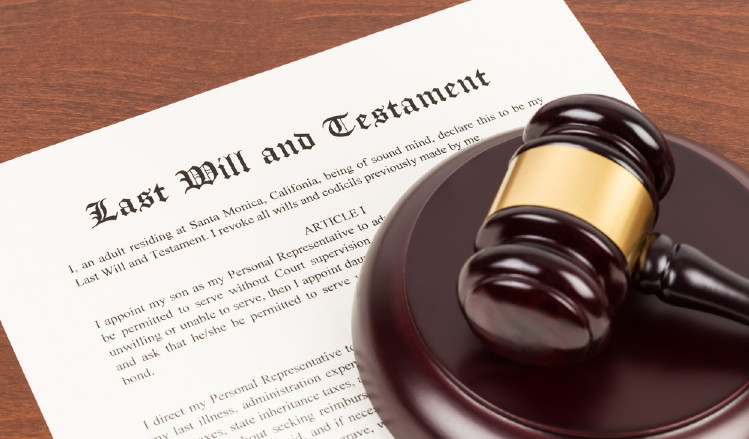For most of us, having a last will and testament offers us the comfort that our personal and financial affairs will be dealt with when we pass. Also, having a will means that one gets to decide how their property gets distributed upon death, and not the state. However, your IRA Beneficiary form may trump the details of that will.
- You must name beneficiaries for your IRA
- It’s good practice to name both a primary and contingent beneficiary
- Community property states may dictate where your assets go
Dying without a Will
In general, when one dies without a will or other estate plan, they will be deemed to have died “intestate.” In such an event, the intestacy laws of the state where one resides will determine how your property is distributed upon death. This includes any bank accounts, investments, real estate, and other assets, including retirement accounts.
IRA Beneficiary Form
When it comes to owning an IRA, the bank, financial institution, or trust company that administers your IRA will require that the IRA owner complete an IRA beneficiary form. The IRA beneficiary form will require the IRA owner to indicate a “primary” and “contingent” beneficiary to his or her IRA in the case of death. In other words, the IRA beneficiary form indicates the party or parties that will receive the deceased IRA owner’s IRA upon death. The primary beneficiary is the first party or parties that will receive the IRA upon the IRA owner’s death. Whereas, a contingent beneficiary or beneficiaries would only receive the IRA assets if all primary beneficiaries are no longer alive. In addition, an IRA owner can identify one or more primary or contingent beneficiaries, but the allocation percentage should equal 100%.
Community Property State Rules
However, if the IRA owner resides in a community property state, community property law can dictate who gets your IRA after death. The following states are community property states:
- Arizona
- California
- Idaho
- Louisiana
- Nevada
- New Mexico
- Texas
- Washington
- Wisconsin
Therefore, if an IRA owner lives in one of the aforementioned states, the IRA holder must take the community property state rules into account when naming a beneficiary of an IRA. In a community property state, state law may recognize the IRA owner’s spouse as the beneficiary of the IRA, unless the spouse consents to another beneficiary.
In other words, if one lives in a community property state and does not want to name his or her spouse as a primary beneficiary to his or her IRA, he or she will need to get the spouse to consent to naming a third-party as beneficiary, or risk having the beneficiary nomination rendered null and void under state community property law. Whereas, if an IRA holder does not reside in a community property state, he or she can technically designate a non-spouse as a primary beneficiary, but it is remains good practice to have the spouse consent to the selection of the third-party beneficiary.
Your Will & IRA Beneficiary Form
In most cases, when one is working on their will and estate plan, he or she will typically make sure his or her will and IRA beneficiary form are in sync and are naming the same party or parties as the beneficiary of the IRA. For example, in most cases, a spouse will typically leave most of his or her assets to the surviving spouse, including an IRA, which is why there are rarely any conflicts between the IRA owner’s will and IRA beneficiary form.
However, at times, issues do arise, such as in the case of death, divorce, and dispute, where the IRA owner forgets to revise the IRA beneficiary form but does change his or her will. In the case of the death of the IRA owner, what happens? Does the will or the IRA beneficiary form take precedence?
Inconsistencies Between Will & IRA Beneficiary Form
Surprisingly, it is the IRA beneficiary form that trumps the will in the case of a conflict. Most people would think that a signed will would end up trumping an IRA beneficiary form provided by a bank or financial institution. However, that line of reasoning is incorrect. The beneficiary designation is a legally binding document and will trump the will. In other words, no matter what your will says and what your current relationship is with your primary beneficiary at death, the IRA beneficiary form will dictate who receives the IRA funds, even it is in conflict with your will and estate plan. As you can imagine, this can cause some nightmare type of probate scenarios for the deceased IRA owner’s family.
Tips for Preventing IRA Beneficiary Disputes
Below are a number of tips every IRA holder should consider in order to avoid an IRA estate planning nightmare:
- Review your IRA beneficiary form each year with the IRA custodian and make sure it properly reflects your estate planning intentions
- Share your IRA beneficiary form with your estate planning attorney prior to the drafting of your will
- Talk to your spouse or primary beneficiary about your estate plans, in general terms
- If you are going through a divorce, separation, or dispute with your primary beneficiary, you should consider changing the IRA beneficiary form immediately, even if it is only temporary
- In the case of a Self-Directed IRA, provide your primary beneficiary with information on the IRA custodian and investments made so they have the relevant information in the case of death
- Keep a copy of your IRA beneficiary form with your will in a safe and secure place
With over 50 million IRAs totaling over $10 trillion dollars, it is important that every IRA owner understands the importance of having an accurate and updated IRA beneficiary form. Failure to do so, can lead to some nightmarish probate scenarios.











